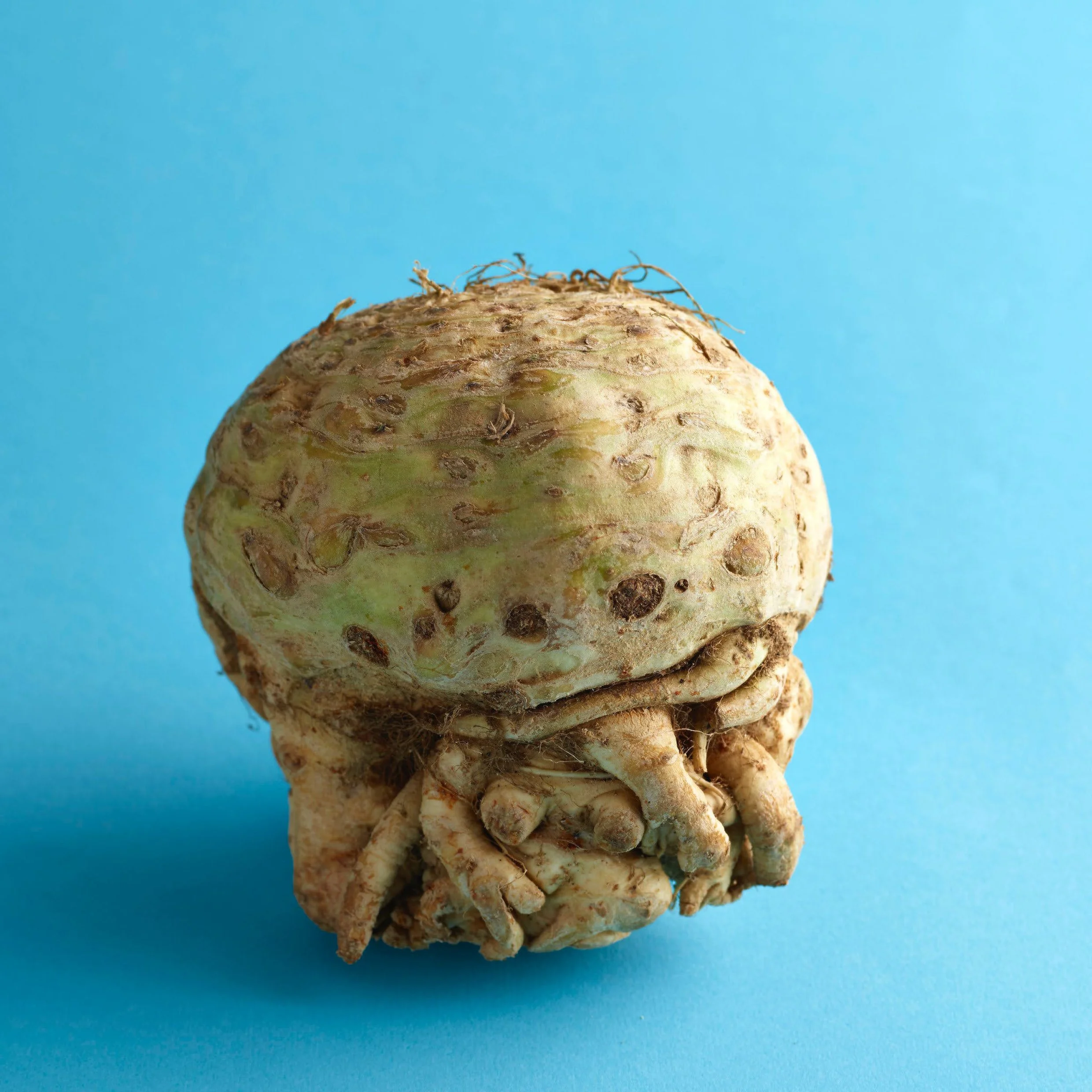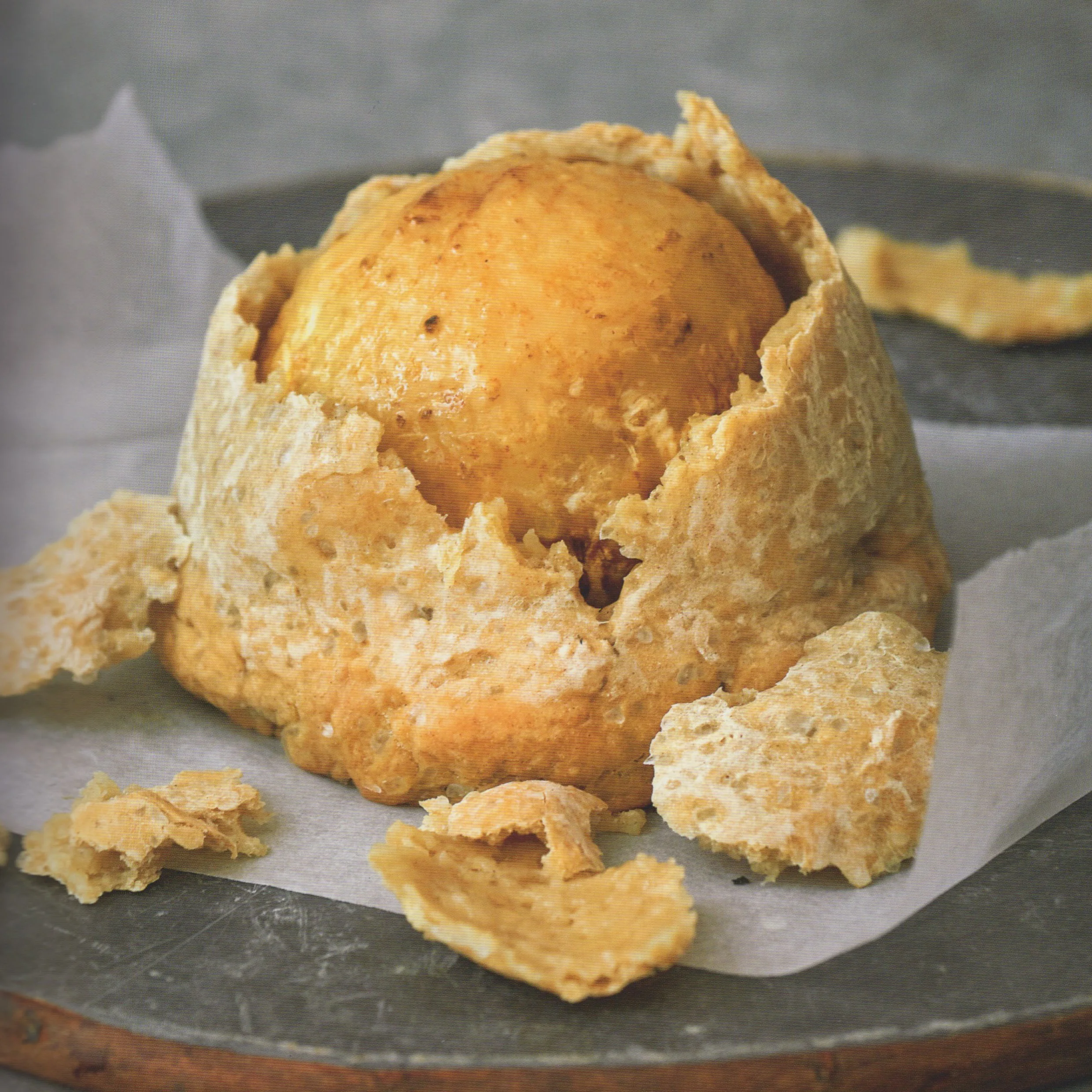Best In Season - February - written by Chef Consultant, Celia Brooks
Celeriac - cut it some slack!
Celeriac has a mysterious PR problem. Why is it not better known and loved in the English-speaking world? People at the supermarket checkout see me load a large knobbly whitish-green orb onto the conveyor belt and ask me, “what IS that thing?”, launching me into a diatribe of its many delicious uses - and they are probably sorry they asked…
Its tall and slender cousin celery gets all the attention, and yet celery is not nearly as versatile, nutritious or even as interesting. Don’t get me wrong – I love celery. But for me, celeriac is the real star. Celeriac is the root base of a plant closely related to celery, and only the root is eaten, as the stems are tough and dark green, so they are always cut off (normal celery plants don’t form a root bulb). Some food writers describe celeriac as “ugly”, and while it is a bit of a beast of a vegetable, weighing up to a kilo and about the size of a small child’s head, all I can see is its beauty. It’s all warts and scraggles on the outside, but beneath its less than glamorous exterior is a covetable creamy white globe with endless possibilities.
Celeriac is low in calories and low in carbs, but it performs like a starchy vegetable and can be pureed, roasted and fried. It imparts a wonderful rich dimension to vegetable broth. It can also be eaten raw. Anything you can do with a carrot, you can do with celeriac. It has a unique flavour, similar to celery but with a pronounced sweetness. Coming in such a prolific size, it’s economical too. I think it deserves more love in everyone’s kitchen and diet.
What’s more, it has nutritional superpowers. It’s a fantastic source of vitamin K, for bone and brain health. It’s got antioxidants for fighting cancer, phosphorus for healthy cell metabolism, and a host of B-vits for converting food into fuel.
Here are just a few fabulous and simple ways to use celeriac:
Celeriac mash: The best mash is made 50:50 celeriac to floury potatoes, both in chunks boiled together in well-salted water, drained thoroughly and mashed with milk and butter. It’s also superb with sweet potatoes as a mash.
Celeriac latkes: Use 50:50 grated celeriac and potatoes in your traditional latke recipe for a surprisingly delicate variation.
Celeriac remoulade: Make the classic French side salad with julienne or grated raw celeriac dressed first with a squeeze of lemon juice, then with a good mayonnaise or crème fraiche or half of each, a heavy dose of Dijon mustard, and capers. Serve with a cheese omelette, or use for stuffing a baked potato or sweet potato.
Salt-baked celeriac
From “SuperVeg” by Celia Brooks
This has been trending on London restaurant menus for a while now, and I thought it was just a gimmicky flash in the pan until I tried it at home. I thought, well, why go to all the trouble of making a throw-away dough to bake a celeriac in if it doesn’t really improve the vegetable? I guess I tried eating it at the wrong restaurants, because once I did it myself, it was a totally worthwhile effort. The salt dough only takes a few minutes to throw together and what you end up with is a transformation to a whole new level of sublime – an uberceleriac. Once baked, you have quite a large quantity of ready-to-eat celeriac, which keeps well – up to 5 days in the fridge. It can be sliced into thin or thick-ish steak-like slabs (and fried, if desired, though not essential – reheating in the oven or microwave is fine too) and served as a base for a topping such as poached egg, sautéed mushrooms, or legumes. Think of it as a substitute for grains or potatoes. It can also be cut in wedges or chunks, mashed or shredded for a variety of textures, though the slab is the easiest and most effective on the plate, in my opinion.
Serves 4-6 / Prep 25 mins / Cook 1 hour + cooling time
Ingredients
1 large celeriac, (750g approx unpeeled weight)
250g rock salt
500g plain flour
300ml water
Method
Special equipment: large baking tray; non-stick baking paper for lining the tray and for rolling the dough; rolling pin; skewer
1) Preheat the oven to 180C and line a large baking tray with non-stick paper.
2) Peel the celeriac using a sharp knife and cut away the roots and any muddy deposits, then rinse and pat dry.
3) Make the salt dough. In a large bowl, mix the salt and flour, then mix in the water using a wooden spoon. Get your hands in and start kneading against the side of the bowl until it draws together into a hard dough. (Add a little more flour if it is sticky.)
4) Place a large sheet of baking paper on your work surface and pop the dough on it, then place another sheet on top and press the dough down. Roll out the dough between the sheets into a circle with a thickness of about 0.5cm / ¼ inch.
5) Place the celeriac directly on the dough in the middle and wrap the dough around it, completely enclosing it and making sure there are no holes.
6) Transfer to the lined baking tray and bake for 1 hour, or until the celeriac offers no resistance when pierced through to the middle with a skewer.
7) Allow to cool completely. Remove the crust and discard it. The celeriac is now ready to be sliced and fried, or reheated to your liking (see suggestions above).




